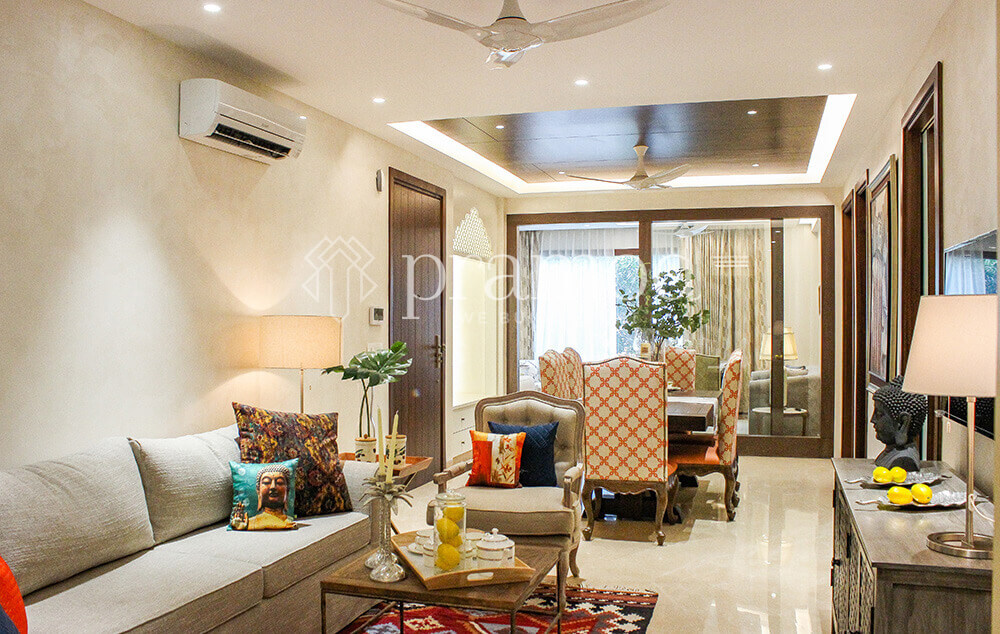
Space Planning is The Most Important Element of The Spaces We Build
Luxury Homes Space Planning
Effective space planning has a direct influence on the utilization of the space for the people living in it and keeping the homes clutter free. It ensures optimal use of floor area without wasted space often spent on circulation, unnecessary storage, and other wasteful activities and spaces. Therefore, it is a critical factor, which can directly affect the building processes and expenditure.
At Pramod, effective space planning is a fundamental element of the building and interior design process. It starts with an in-depth analysis of the available area and how each square meter of the space is to be used. Once we have the analysis with us, the expert architect designer then draws up a plan that defines the zones of the space and the activities that will take place in those zones. We make sure that our space plan also defines the circulation patterns that show how people will move through space. We also add the intricate details of all the furniture, equipment and hardware placement.
Every building we construct has spacious, well-lit and ventilated spaces throughout the building to let the residents be at ease, comfortable and happy. Not only this, to keep the air inside fresher and greener, we make sure that there is a provision for ample greening along with ample natural light within the building. Because we firmly believe that the quality and practicality of the environment in which people have to stay directly influences their well-being. Thus, each square feet is well meditated so that maximum space can be utilized. Also, Vastu principles form a large part of our space planning initiatives to retain the longevity and prosperity of the living spaces we build. In the endeavour, we do not let go of the importance that must be given to the building services and maintenance to minimize the service and repair cost once the residents occupy the building.
This is how we plan our buildings, every time we undertake a project:
Staircase and Lift Location 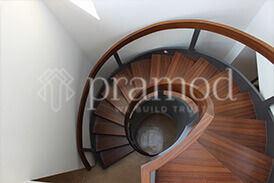
These two are vital parts of the building that provides access to it. We plan both of these meticulously in terms of space, light and ventilation. Ample utilization of the space is considered so that it is not wasted at all. We also make sure there is enough daylight and air circulation so that in case of power failures, it doesn’t become difficult to make the movement in and around these areas. Vastu principles are followed to the T for defining and designing the staircase and lift areas.
Lift Lobby Space
This is another fundamental area that we plan scrupulously. This is the area, which needs functional space as it sees maximum activity in a day, and sometimes with heavy moveable stuff transferred from space to space. We make sure that the area has enough daylight and is well lit for night times. Some greening renders the aesthetic beauty and freshness to lift lobby area.
Kitchen and Utility Area
Kitchen in a living space is an important place that must hold positive and vibrant energies. We plan the kitchen with the idea in mind that every corner must have a utility, without any white spaces that hold no purpose at all. Usually, the utility area is placed next to the kitchen for storage and standby purposes, yet, in case of non-availability of space in that area, utility area is provided in a secluded space. If there is no secluded area coming as per layout then it is given next to the room of minimal use, for example, the guest room, to maintain the privacy of others staying in the house. The utility area is equipped with all the functionalities so that it can be used as a laundry area too. Vastu is the most significant consideration while planning the kitchen. Thus, the water outlet, the sink area and the stove places are planned effectively to create a cordial balance.
Designing as per Anthropometric Data
Anthropometry is the branch of ergonomics that deals with body shape and size. People possess different sizes and so we always take these variations into consideration whenever we design spaces for them. As per the normal industry trends, very little consideration is given to the anthropometric data of the people that would be using that space. Designs that are incompatible with normal anthropometric measurements of a workforce often result in undesired incidents. Living or functioning in an environment that does not focus on ergonomics principles could lead to fatigue and discomfort and also injuries which are known as musculoskeletal disorders (MSDs). We follow a highly ergonomic approach to the design of the spaces that we build to achieve an appropriate balance between the residents and the places they live in.
Vastu Alignments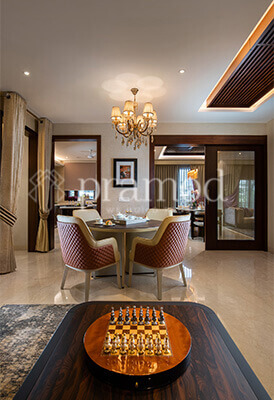
As said earlier, Vastu is a significant consideration in all the projects we undertake. We deploy the space planning only after making sure the specifications comply with the Vastu principles, as it ensures the flow of positive energies, healing, and prosperity within the living spaces. We regard Vastu Shastra as good practice of designing buildings and planning spaces to keep them free from metaphysical forces and it also helps to conduct human life in harmony such that the spaces bring health, wealth and serenity to the inhabitants. Vastu Shastra follows the Vastu Purusha Mandal. The mandala helps in deciding the whereabouts of various activities in a building. Therefore, each room and space is cut out keeping in view the direction specifics and other Vastu elements.
Circulation Within the Space
The term ‘circulation’ refers to the movement of people through, around and between buildings and other parts of the built environment. Within buildings, circulation spaces are spaces that are predominately used for circulation, such as entrances, foyers and lobbies, corridors, stairs, lift lobby and so on. We take utmost care of the regulations laid down by the authorities and categorize the circulation spaces as those facilitating horizontal circulation, such as corridors, and those facilitating vertical circulation, such as stairs and ramps, in the specified sizes. The size of circulation spaces may be determined by factors such as; the type of use, the numbers of people using them, the direction of travel, crossing flows and so on.
Storage and Open Balconies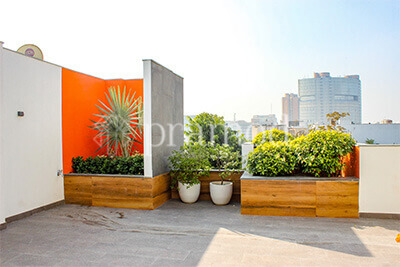
A home is a place where residents can live comfortably and store their belongings in an organized way. Keeping this in mind, we make sure there is sufficient thought put into planning the storage such as constructing wall-mounted closets in the rooms, cabinets in the kitchen and restrooms. We plan the spaces so that they have a dedicated junk storage area, where all the not-in-use stuff can be stored for reuse as and when wanted.
Open balconies make other important and considerable elements of our constructions. We completely believe in the concept of “life and air outside the window”. That is why we make sure each room has a provision for a balcony where the dwellers can sit, relax, breathe in fresh air and look at the outside life, under the blue sky.
While planning spaces, our supreme endeavour is to make optimal use of every millimetre of space for the intended purpose, whether it is living rooms, bedrooms, kitchen, pause areas, and even circulation. Simply put, a well-considered and designed space plan will allow you to make the best use of your floor area. And at Pramod, that is what we put all our efforts into.





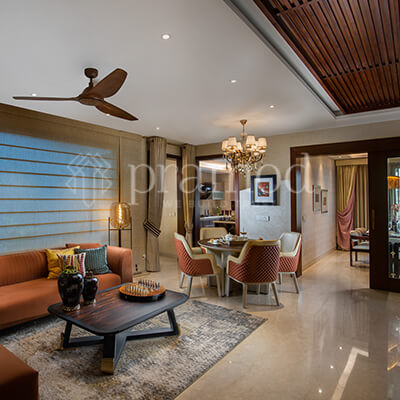
No Comments
Sorry, the comment form is closed at this time.